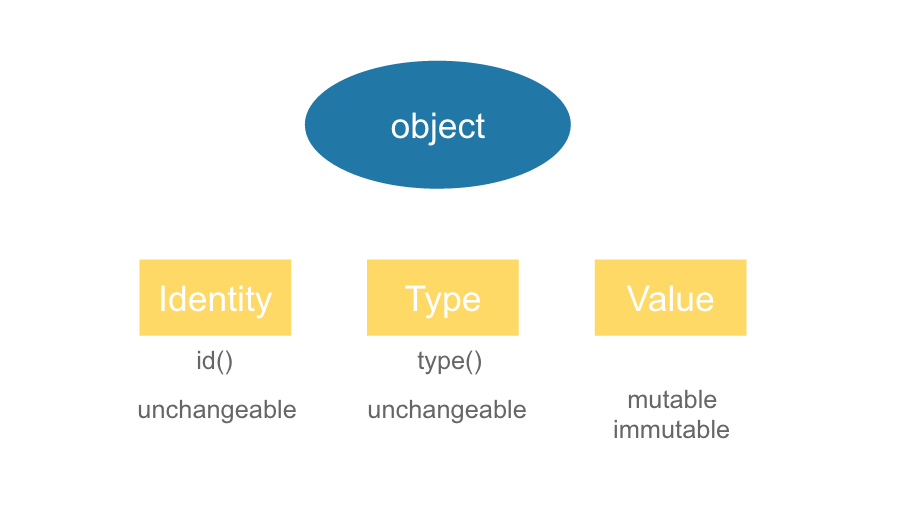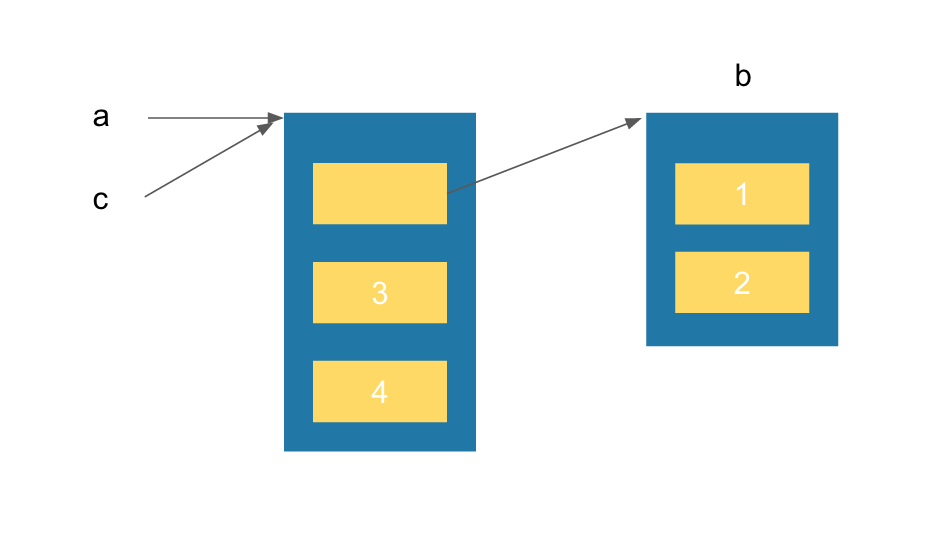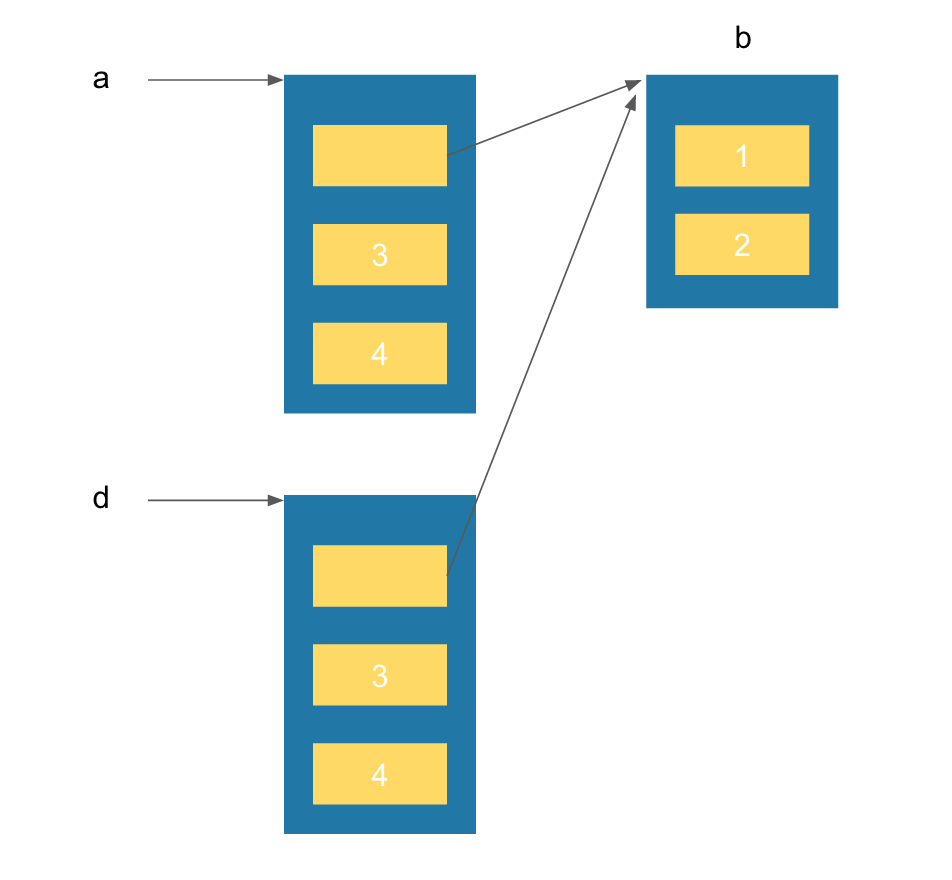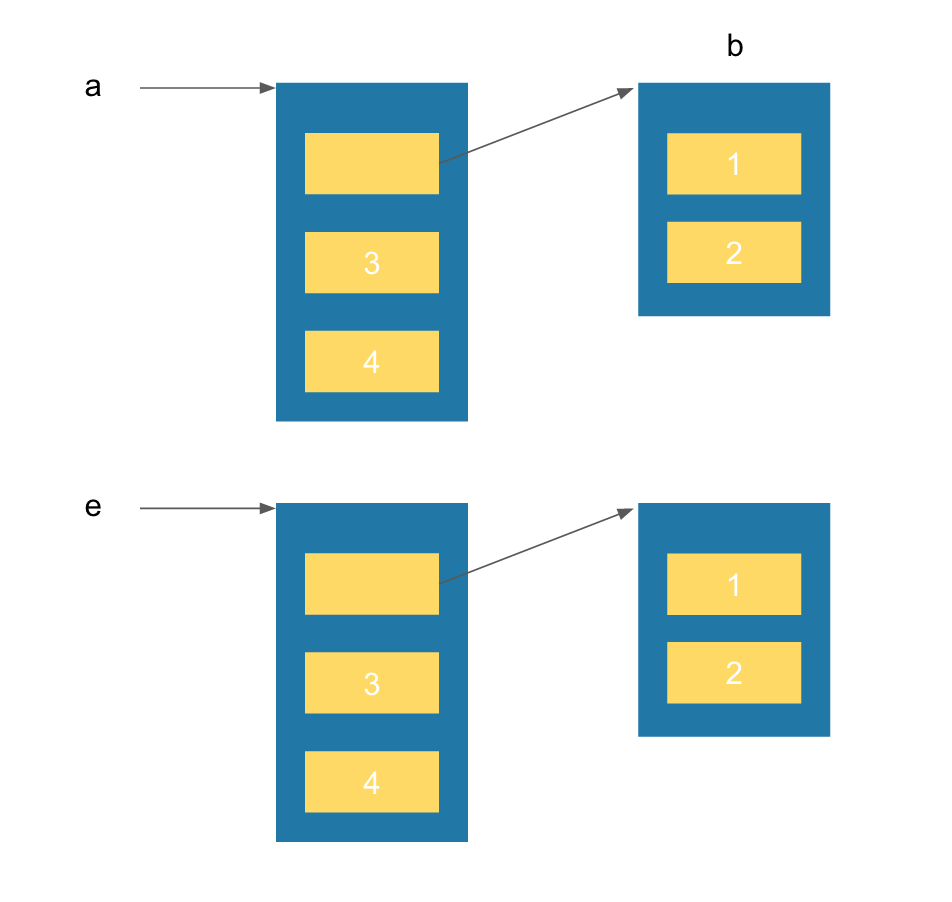理解 Python 引用、浅拷贝和深拷贝

在阐述引用、浅拷贝和深拷贝前,首先需要要了解 Python 的世界里,一切皆对象,每个对象各包含一个 idendity、type 和 value。
- 引用(Reference)
- 浅拷贝(Shallow copy)
- 深拷贝(Deep copy)
Reference

>>> b = [1 , 2]
>>> a = [b, 3, 4]
>>>
>>> c = a
>>> print c
[[1, 2], 3, 4]
>>> id(a)
4408148552
>>> id(c)
4408148552
c = a 表示 c 和 a 指向相同的地址空间,并没有创建新的对象。
Shallow Copy

>>> import copy
>>> d = copy.copy(a)
>>> print d
[[1, 2], 3, 4]
>>>
>>> id(a)
4408148552
>>> id(d)
4408199792
>>>
>>> id(a[0])
4408022944
>>> id(d[0])
4408022944
>>>
>>> d[0][0] = 5
>>> print a
>>> [[5, 2], 3, 4]
d = copy.copy(a) 创建了一个新对象,复制了原有对象的引用。
Deepcopy

>>> e = copy.deepcopy(a)
>>> print e
>>> [[1, 2], 3, 4]
>>>
>>> id(a)
>>> 4408148552
>>> id(e)
>>> 4408394792
>>>
>>> id(a[0])
>>> 4408022944
>>> id(e[0])
>>> 4408398432
>>>
>>> e[0][0] = 5
>>> print a
>>> [[1, 2], 3, 4]
e = copy.deepcopy(a) 新建了一个新对象,完整的在内存中复制原有对象。
Note
关于浅拷贝和深拷贝的区别,Python 的 document 是这样解释的:
The difference between shallow and deep copying is only relevant for compound objects (objects that contain other objects, like lists or class instances):
- A shallow copy constructs a new compound object and then (to the extent possible) inserts references into it to the objects found in the original.
- A deep copy constructs a new compound object and then, recursively, inserts copies into it of the objects found in the original.
使用深拷贝时,需要注意以下两个问题:
- 递归对象拷贝: Recursive objects (compound objects that, directly or indirectly, contain a reference to themselves) may cause a recursive loop.
- 大对象拷贝: Because deep copy copies everything it may copy too much, e.g., administrative data structures that should be shared even between copies.